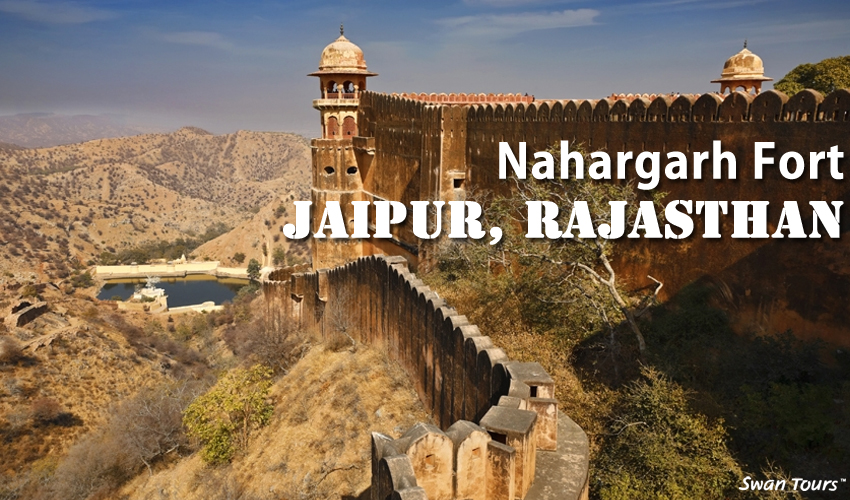Essential information on Jaipur, Rajasthan
Delhi, Agra
and Jaipur are a part of the most popular travel itinerary in India , Every
foreigner coming to India and every tourist visiting Rajasthan would include golden
triangle tour packages as a part of their holiday experience .Below
is some touristic information on Jaipur :
As the sun
softens and the punishing Rajasthan heat eases off the canny visitor to Jaipur
hops in a taxi and spins out of town. On the road to Amber, a turning off left
twists and turns up to the summit of a long, high ridge of the Aravalli Hills
called Kali Khoh.
Clifftop
Jaigarh Fort is at the end of the road to the right. Here the Rajput
chieftain's built-in throne perches like an eagle's nest on the battlements.
From it, there is a raja's-eye-view down to Amber fort-palace. The location is
superb. The fort sprawls over its own hill in a valley protected on all sides
by rugged mountains. As extra defiance, castellated walls snake up the
mountainsides, punctuated by watch-towers. From his seat, the clan chief of the
Kachchwahas could survey the whole valley, espy any threats, receive warning
signals from look-out posts and give orders to attack the enemy. For this was
the nearest Rajput stronghold to Delhi, the capital of a succession of Muslim
invaders: through the gap to the north lay the threat of first the sultans,
then the powerful Mughal.
At the other
end of the ridge, Nahargarh Fort mounts equally impressive guard over the later
Kachchwaha capital, Jaipur. As the sun ripens to a glowing Rajasthani crimson,
the honks, shouts and music waft up from the city. Standing on the walls to
peer down on to the plain, you can easily pick out the original grid-plan,
walled city in the foreground of Rajasthan's capital, whose tentacles now
sprawl into infinity.
Jaipur
contrasts sharply with tightly protected Amber Fort. Such comparative
vulnerability reflected the confidence of its eighteenth - century builder,
Maharaja Jai Singh II. With overflowing coffers and seven m generations of
Kachchwaha rulers behind hi who had kept not merely a diplomatic peace with the
Mughals but had Mughal emperors and led Mughal armi married their princesses to
es, he could leave off Rajput soldiering and indulge in more intellectual
pastimes.
As the stars
twinkle into life, the taxi zigzags down to the plain and Through Zorawa Singh
Gate into Jai Singh's city. This is the best hour to wander the streets. The
locals are out in force. At Bari Chaupar crossroads, gaggles of girls in
saffron saris barter for bangles, while housewives swathed in raspberry pink,
turquois and tomato red, jingle their arm and ankle dark-skinned bangles as
they glide about the jasmine-scented air of the flower stalls. Tall,
dark-skinned, pink-turbaned men amble past sackfuls of fresh ginger and
chillies lit by dangling naked light-bulbs. Behind the city Palace, men and
women scurry through Jaleb Chowk to Govinda Deva Temple to do Puja to the
blue-skinned god Krishna. Down Johari Bazar, a magnificent parade of elephants,
camels and floats carrying children dressed up as Krishna and his beloved Radha
makes its stately progress, the way lit by women balancing gas lamps on their
heads. At the gateways, piles of tempting sweetmeats glisten beneath rows of
fairy lights. And up on the hill behind the palace, Nahargarh Fort is now
floodlit like some extravagant prop for a Wagner opera.
Jaipur is no
quiet provincial town. Built as the capital of the then most powerful Rajput
state, it is now the capital of Rajasthan, the government seat for all the
former states of Rajputana and their hilltop forts, fairy tale palaces and
exotic maharajas. The core may be pink and pretty, but it is also noisy and
dusty, and its bouncy black tempos (motor bike taxis) belch out polluting fumes
into the dry heat; and the municipality makes little effort to keep the city
clean. Best times to explore are early and late in the day, lolling in a palace
or mansion-turned-hotel in between.
To see the
warring Rajput at his most splendid, visit Amber first, going by car or bus. In
town, Jai Singh's palace city is best seen on foot or by auto-rickshaw. More
palaces and mansions, originally built in country suburbs, litter the rest of
the city. Despite the encroachment of modern living, colourful processions for
weddings and Hindu festivals are daily events, side lanes are crowded with
traditional craftsmen and merchants, and the thoroughly royal game of polo
thrives.
Note: Jaipur's monuments mostly have
short opening hours, from 9.30 or 10.00 am until 4.30 pm.
For further
information on travel to Jaipur , contact Swan Tours - one of the leading travel agents in India.






This is certainly the best article. Very well constructed about blog commenting. Detective Agency in Delhi
ReplyDeleteOur affordable Umrah packages from Mumbai offer budget-conscious pilgrims a hassle-free route to Makkah and Madinah—with costs beginning near ₹84,000 for duration-based economy options. You’ll benefit from thoughtfully packaged essentials like transport, visa facilitation, and accommodation—all tailored for value. Al Arafat ensures no hidden fees and gives you the freedom to design your journey as you wish.
ReplyDeleteGreat read with clear insights and practical takeaways. The writing flows smoothly, making complex ideas easy to understand. Looking forward to more posts like this.
ReplyDeleteBest Time to Visit Seven Sisters of India
Best Time to Visit North East India
Best Time to Visit Wayanad Kerala
best time to visit kerala with family
best time to visit kodaikanal